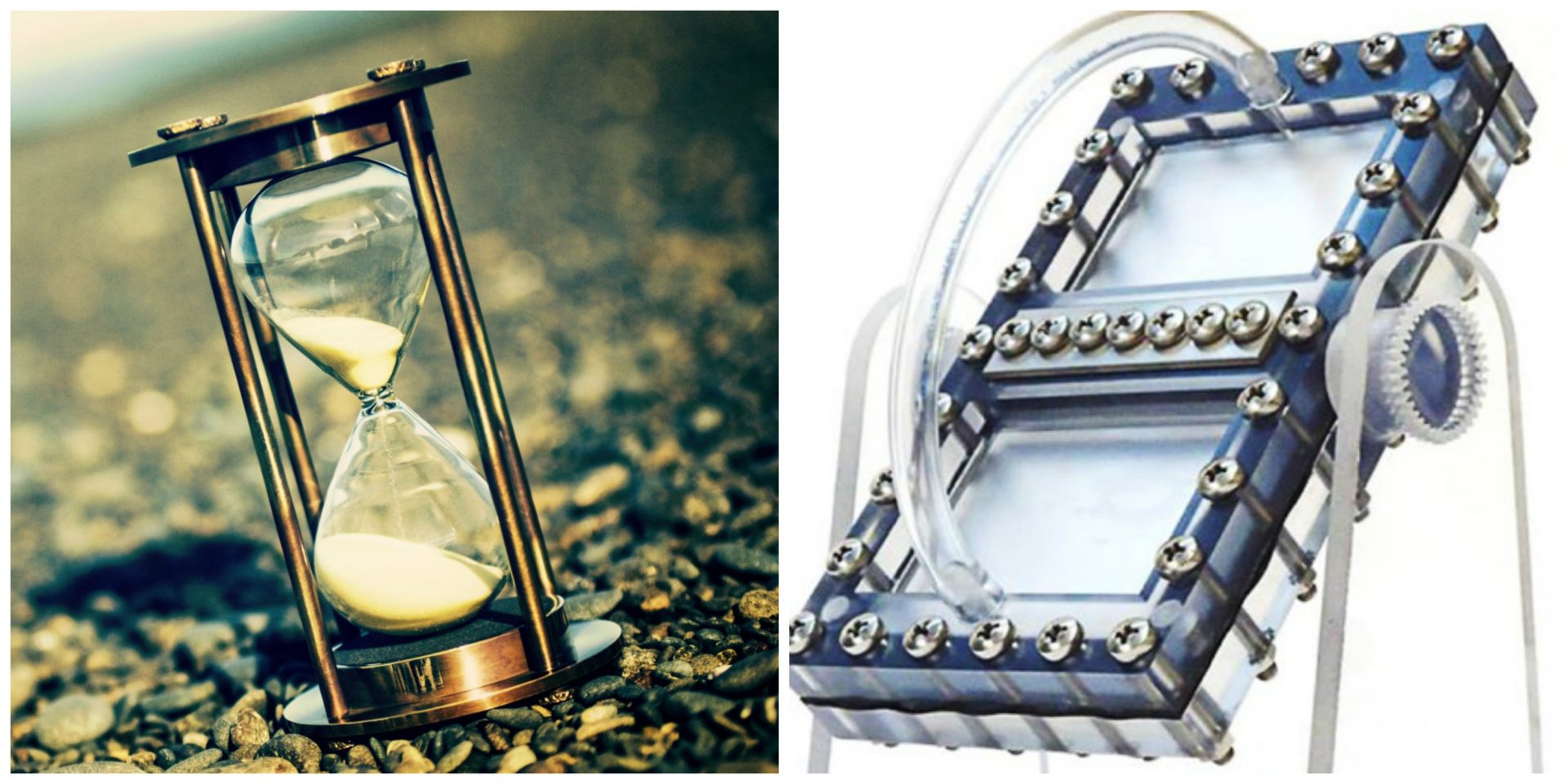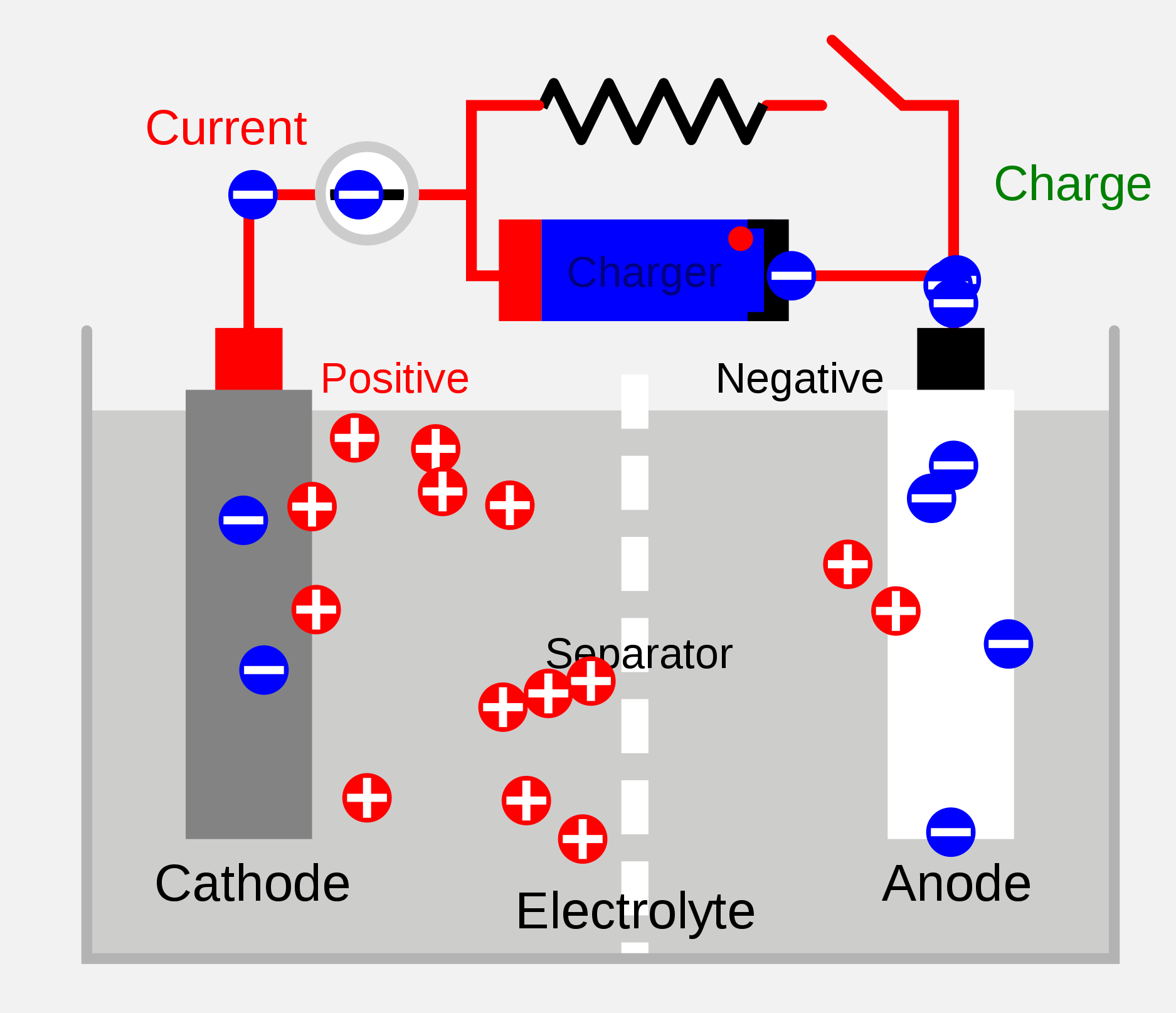[dropcap size=small]M[/dropcap]IT scientists never seize to amaze the world, this time they have devised an ingenious concept of charging the battery by harnessing the force of gravity and functioning on the similar fundamental basis as in hourglass. This can be another feather in the cap for MIT scientists if they can build a functional prototype, as for now being it is just proof of concept design. They have portrayed the outline of Hourglass liquid battery in the paper for Energy and Environmental science.
The elementary concept of regular batteries is kind of straightforward, [highlight ]there will be two terminals one positive and another negative[/highlight]. Inside the battery, [highlight ]electrons will be produced as chemical reaction proceeds and electrons will be accumulated at positive end as charge of electrons is negative[/highlight]. If both the terminals are joined using wire and a load such as motor,[highlight ] bulb is introduced then electrons will start to flow from one terminal to another[/highlight] and battery starts to discharge and required device is powered.
In ordinary batteries, chemical reaction is used to charge the battery or we can say chemical reactions is used as pumping mechanism for the battery.
This will not be the case in Hourglass liquid battery, here gravity will be used as pumping mechanism instead of chemical reaction. This is the unconventional design that MIT scientists have developed as an alternative to liquid flow batteries- as it will solely bank on the gravitational force for pumping electrons which will appreciably bring down not only the complexity but also the overall cost of the entire process.
Device appears much similar to windowpane than orthodox hourglass. If the team at MIT can successfully develop a operational and feasible prototype of so called Hourglass liquid battery then it will considered as remarkable approach towards the expansion of clean and renewable energy.
[alert type=white ]The work was supported by the Joint Center for Energy Storage Research, funded by the U.S. Department of Energy. The team also included graduate students Ahmed Helal and Frank Fan, and postdocs Kyle Smith and Zheng Li.[/alert]





